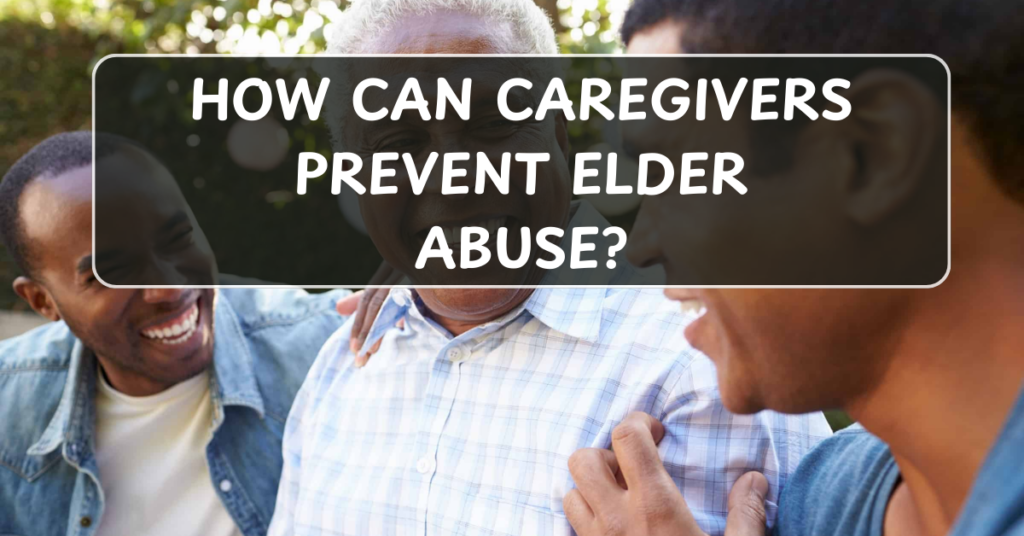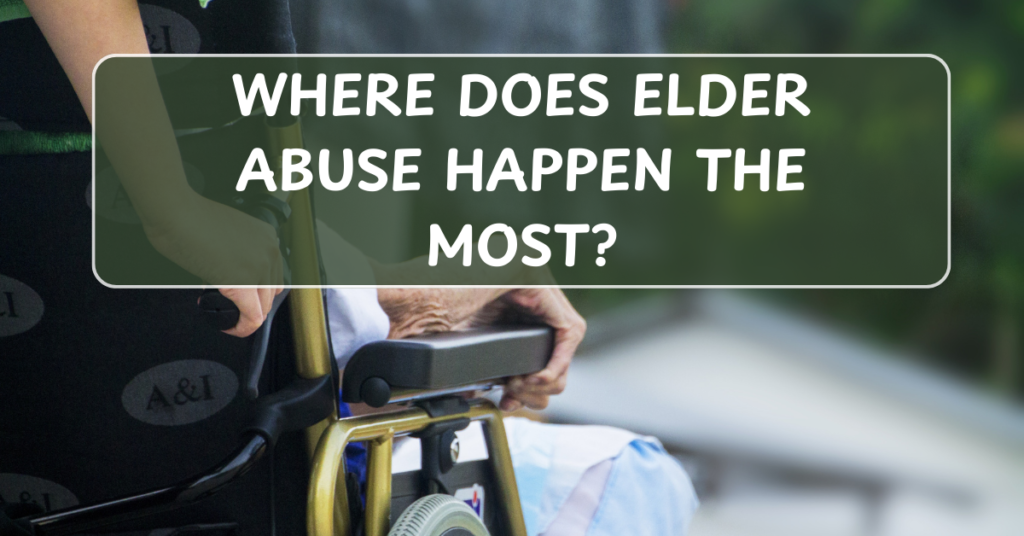
Elder abuse is a serious concern that can occur in many caregiving situations, whether at home or in a care facility. As a caregiver, it’s crucial to recognize your role in preventing abuse and to provide a safe, nurturing environment for elderly individuals under your care. In this article, we’ll explore actionable steps caregivers can take to prevent elder abuse and ensure that the elderly feel respected, protected, and well-cared for.
1. Understand the Different Types of Elder Abuse
Before caregivers can prevent abuse, it’s important to understand what elder abuse is and its various forms:
- Physical Abuse: Causing bodily harm through physical force, such as hitting, slapping, or restraining.
- Emotional or Psychological Abuse: Verbal or non-verbal actions that cause emotional distress, including insults, threats, or intimidation.
- Financial Abuse: Misusing or exploiting an elderly person’s financial resources for personal gain, such as stealing money or coercing them into signing documents.
- Neglect: Failing to provide necessary care, such as food, shelter, hygiene, or medical attention.
- Sexual Abuse: Any form of sexual activity or behavior without consent.
- Self-Neglect: Occurs when the elderly person fails to take care of their own needs due to mental or physical limitations.
Knowing these types of abuse helps caregivers identify red flags and prevent harm before it occurs.
2. Build a Relationship of Trust and Respect
A key way to prevent elder abuse is to establish and maintain a trusting, respectful relationship with the elderly person under your care. When individuals feel respected and heard, they are less likely to become vulnerable to abusive behaviors.
- Listen Actively: Allow your elderly charge to express their thoughts, preferences, and concerns. Listening with empathy helps build a strong relationship.
- Set Boundaries: Establish clear boundaries to ensure that personal space, privacy, and autonomy are respected. This helps maintain a sense of dignity for the elderly person.
- Engage in Regular Conversation: Having regular, casual conversations can create a sense of normalcy and allow you to monitor any changes in their emotional or mental state.
3. Provide Adequate Training and Education
Proper training for caregivers is essential in preventing elder abuse. Understanding the best care practices, recognizing signs of distress, and learning how to manage difficult behaviors can reduce the risk of unintentional harm.
- Learn About Elder Care: Take courses or attend workshops that focus on elderly care, including how to handle mobility issues, dementia, or chronic health conditions.
- Manage Stress and Prevent Burnout: Caregiving can be emotionally and physically exhausting. Learn techniques for stress management and self-care to avoid burnout, which can sometimes lead to abuse.
- Know the Warning Signs of Abuse: Understand the signs of both physical and emotional abuse, so you can identify problems early and seek help if necessary.
4. Practice Patience and Empathy
Elderly individuals may face physical, mental, or emotional challenges that can be difficult for caregivers to manage. Practicing patience and empathy helps to ensure that these challenges are addressed calmly and with understanding.
- Avoid Aggressive Behavior: Refrain from raising your voice, using threats, or using forceful actions. These behaviors can escalate situations and contribute to emotional or physical abuse.
- Practice Compassion: Recognize that the elderly individual may be feeling frustrated or confused by their situation. Approach them with kindness, understanding, and compassion, especially when they struggle with tasks or experience discomfort.
- Adapt to Their Needs: Be flexible in your approach to meet the individual’s evolving physical or emotional needs. Recognizing their limitations and adjusting your caregiving approach accordingly can help prevent frustration and agitation.
5. Maintain Open Communication with Family Members
When caregivers work in partnership with family members, they can help monitor and support the elderly person’s well-being. Open communication is essential for reducing misunderstandings and ensuring that all parties are aligned in their goals for the care of the elderly individual.
- Update Family Members Regularly: Keep family members informed about the elderly person’s health, changes in behavior, and any concerns you may have about their care.
- Encourage Family Involvement: Encourage family members to visit often and engage with the elderly person. Frequent visits help to ensure that any potential issues can be identified quickly.
- Coordinate Care Plans: Work with family members to create a care plan that aligns with the elderly person’s needs and preferences, making sure everyone is on the same page.
6. Foster a Safe and Comfortable Environment
Creating a safe, comfortable, and secure living space is essential for preventing neglect and harm. Ensuring that the elderly person’s environment is free of hazards and has everything they need to thrive is part of a caregiver’s duty.
- Remove Safety Hazards: Regularly inspect the home for safety hazards such as loose rugs, sharp objects, or inadequate lighting. Ensure that the living area is easy to navigate, especially for individuals with mobility challenges.
- Maintain Cleanliness: Ensure that the elderly person’s living space is clean and organized. Poor hygiene or an untidy living environment can contribute to feelings of neglect or emotional distress.
- Ensure Proper Medical Care: Assist with medication management, doctor’s appointments, and any necessary therapies or treatments. Ensuring that the elderly person’s health needs are met reduces the risk of physical neglect.
7. Recognize and Address Any Signs of Abuse
As a caregiver, you must also be vigilant about signs of abuse—whether it’s occurring to the elderly person under your care or another individual in your workplace or community.
- Look for Red Flags: Unexplained injuries, withdrawal, anxiety, or fear around certain individuals can be signs of abuse. If you observe these behaviors, investigate further.
- Take Action: If you suspect that an elderly individual is being abused, immediately report the issue to the appropriate authorities, such as Adult Protective Services (APS), law enforcement, or the facility’s management.
- Support the Victim: If an elderly person discloses abuse, listen carefully, ensure their safety, and assist them in getting the help they need.
8. Encourage Independence and Autonomy
Elderly individuals often feel powerless or overly dependent on others for care. Encouraging independence can help them maintain a sense of control over their lives and well-being.
- Support Self-Care: Assist with daily tasks as needed, but encourage the elderly individual to remain as independent as possible, even if it means doing tasks at a slower pace.
- Respect Their Decisions: Allow them to make decisions about their care, even if those decisions are difficult or slow. Giving them a sense of control can improve their mental health and reduce feelings of helplessness.
9. Seek Support and Supervision When Needed
Caregivers must not hesitate to seek support if they are feeling overwhelmed. Asking for help is a sign of strength, not weakness.
- Get Support from Supervisors or Managers: If you work in a care facility, discuss any challenges with supervisors or managers to ensure the care environment remains safe.
- Consider Peer Support: Join support groups for caregivers to share experiences, strategies, and advice with others in similar situations.
10. Report Concerns of Abuse Immediately
If you ever witness or suspect abuse, it is your responsibility to report it right away to the appropriate authorities. Reporting abuse can prevent further harm and ensure that the abuser is held accountable.
- Report to Adult Protective Services (APS): APS investigates allegations of elder abuse and provides services to protect vulnerable adults.
- Contact Law Enforcement: If the abuse involves immediate harm or danger, contact law enforcement to intervene and ensure the elderly person’s safety.
Conclusion: Preventing Elder Abuse Starts with Compassionate Care
Preventing elder abuse begins with a foundation of respect, understanding, and empathy. Caregivers play a crucial role in ensuring that elderly individuals receive the care, safety, and dignity they deserve. By staying vigilant, educating yourself, maintaining open communication, and practicing patience, caregivers can create an environment free from abuse and help preserve the well-being of elderly individuals. Protecting the elderly is not just a duty—it’s a responsibility we all share.


